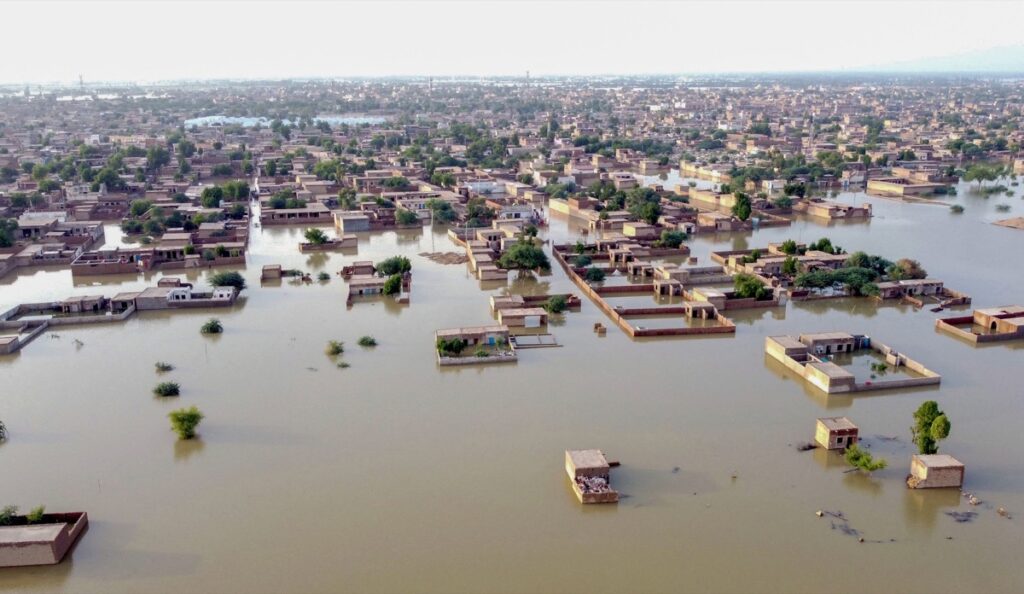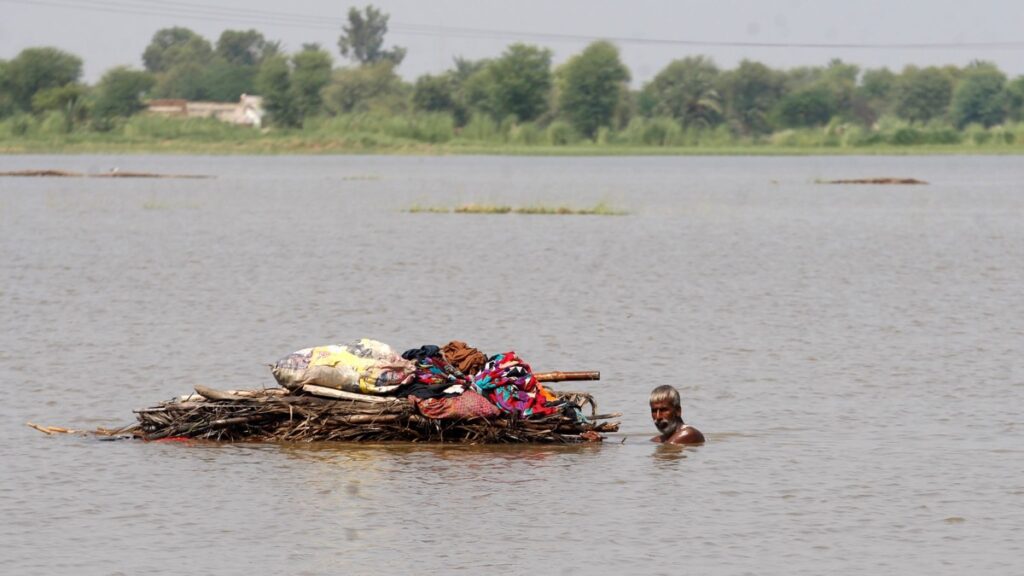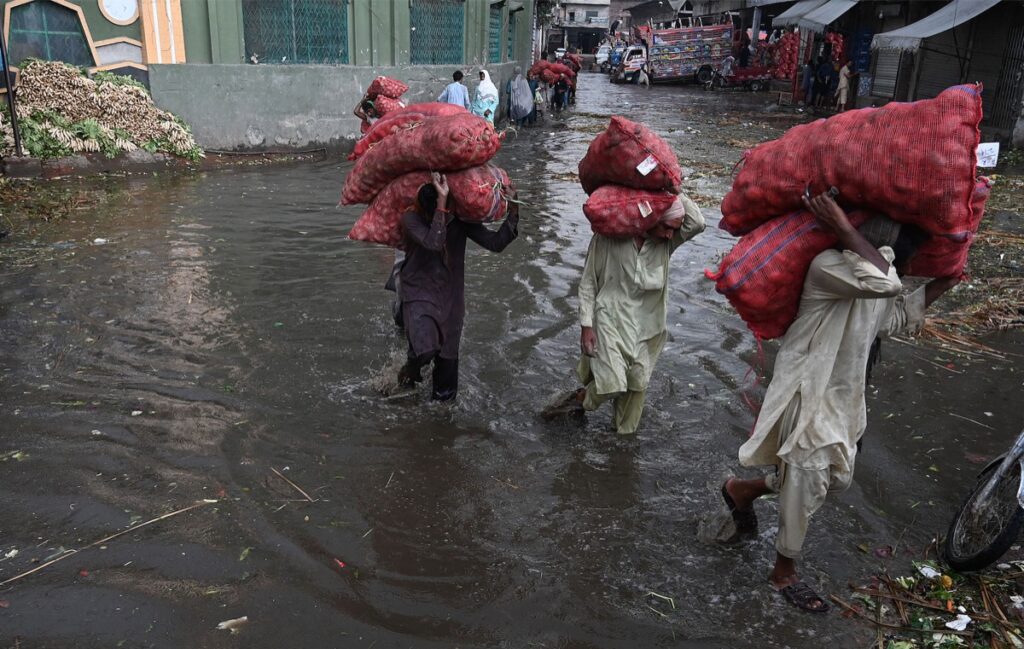Flood waters in Pakistan continue to devastate the lives of hundreds of thousands as homes, roads, crops and livestock are swept away by ravaging floods in the South Asia country.
On Friday 2nd September, the military reported it had evacuated about 50,000 people, including 1,000 by air, since rescue efforts began.
The area affected equivalent to the area of Great Britain is still growing, is reported to have killed at least 1,208 people, including 416 children, the National Disaster Management Authority (NDMA) has said.

However, with further monsoon rains set to fall shortly in the region, alongside northern glacier meltwater due to climate change, as well as India set to open its own floodgates in efforts to mitigate rainfall, the situation in Pakistan is set to dramatically worsen in the coming days.
Pakistan received nearly 190% more rain than its 30-year average in the quarter from June to August, totalling 390.7mm (15.38 inches).
Several humanitarian relief flights carrying fresh supplies are forming a humanitarian air bridge to flood-ravaged Pakistan as the death toll passed 1,200, officials have said, with families and children especially at risk of disease and homelessness.
UN and Pakistan have issued a joint appeal for $160m in emergency funding to help the 3.3 million people affected by the unprecedented floods, which have damaged more than one million homes.

The UN children’s agency UNICEF has warned many more children could die from disease.
“There is now a high risk of water-borne, deadly diseases spreading rapidly – diarrhoea, cholera, dengue, malaria,” UNICEF Pakistan Representative Abdullah Fadil told a Geneva press briefing. “There is therefore a risk of many more child deaths,” he said.
In the Dadu district of Sindh, one of the worst-affected provinces, several villages were under as much as 11 feet (3.35 m) of water.

In neighbouring Mehar, residents were constructing a dike in an attempt to prevent floodwaters from entering the town.
Weather officials predict more rains and flash flooding in the month of September, with southern regions bracing for a surge of water from the Indus river.
Farah Naureen, the director for Pakistan at the international aid agency Mercy Corps, told the Associated Press that about 73,000 women would be giving birth within the next month, and they needed skilled birth attendants, privacy, and birth facilities. Otherwise, she said, the survival of the mothers and newborns would be at risk.
The Sindh province has asked relief camps to deploy additional female doctors and medical officers, to ensure adequate care as more pregnant women and young mothers are displaced by the waters.
The Pakistan country director for the U.N. World Food Programme Chris Kaye said the floods were also likely to disrupt relief work in neighbouring Afghanistan, given the country’s role as a key transit route.
According to initial Pakistan government estimates, the devastation has already caused $10bn in damages, with this figure set to rise.











.jpg&h=630&w=1200&q=100&v=5f99a4b43f&c=1)









Discussion about this post